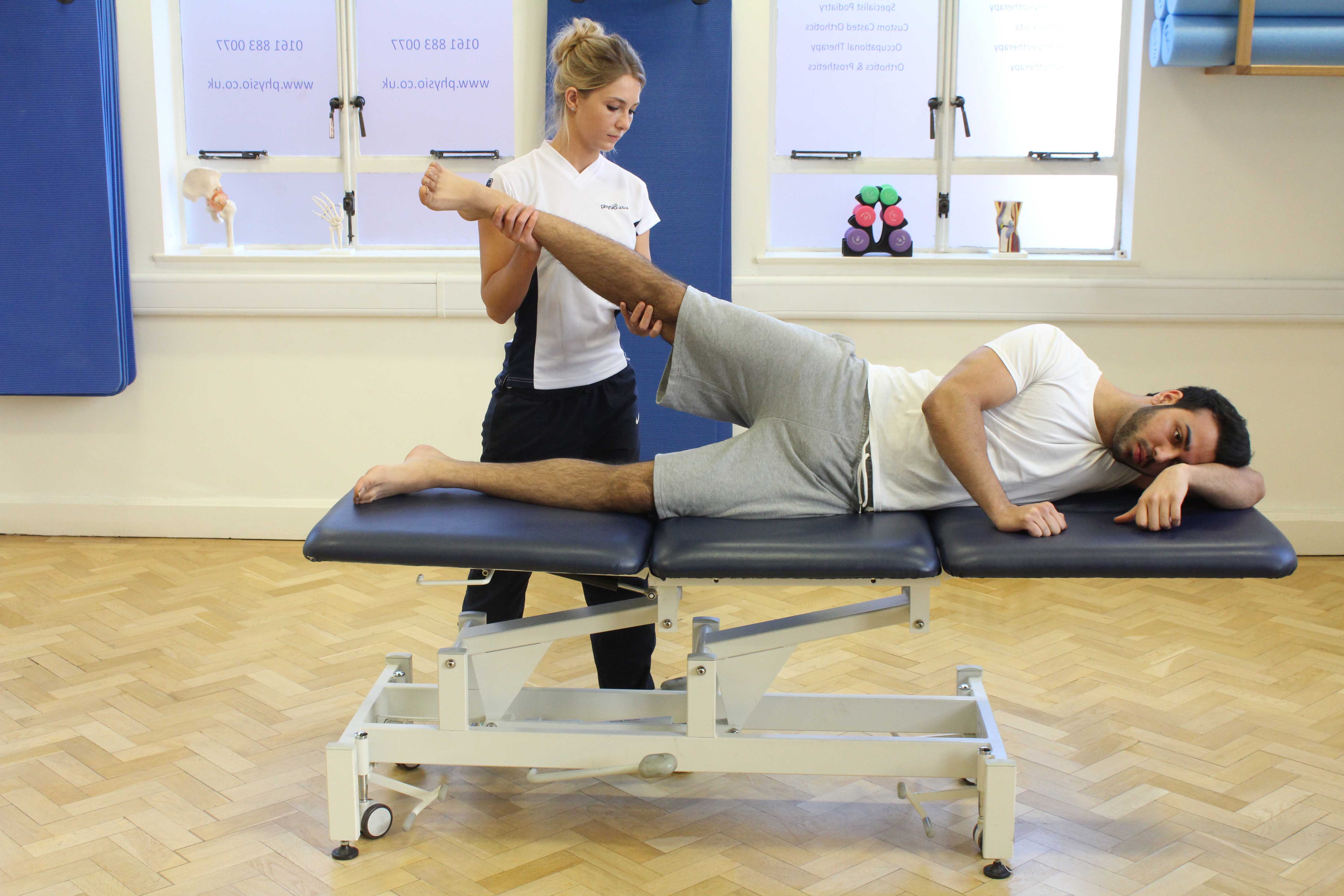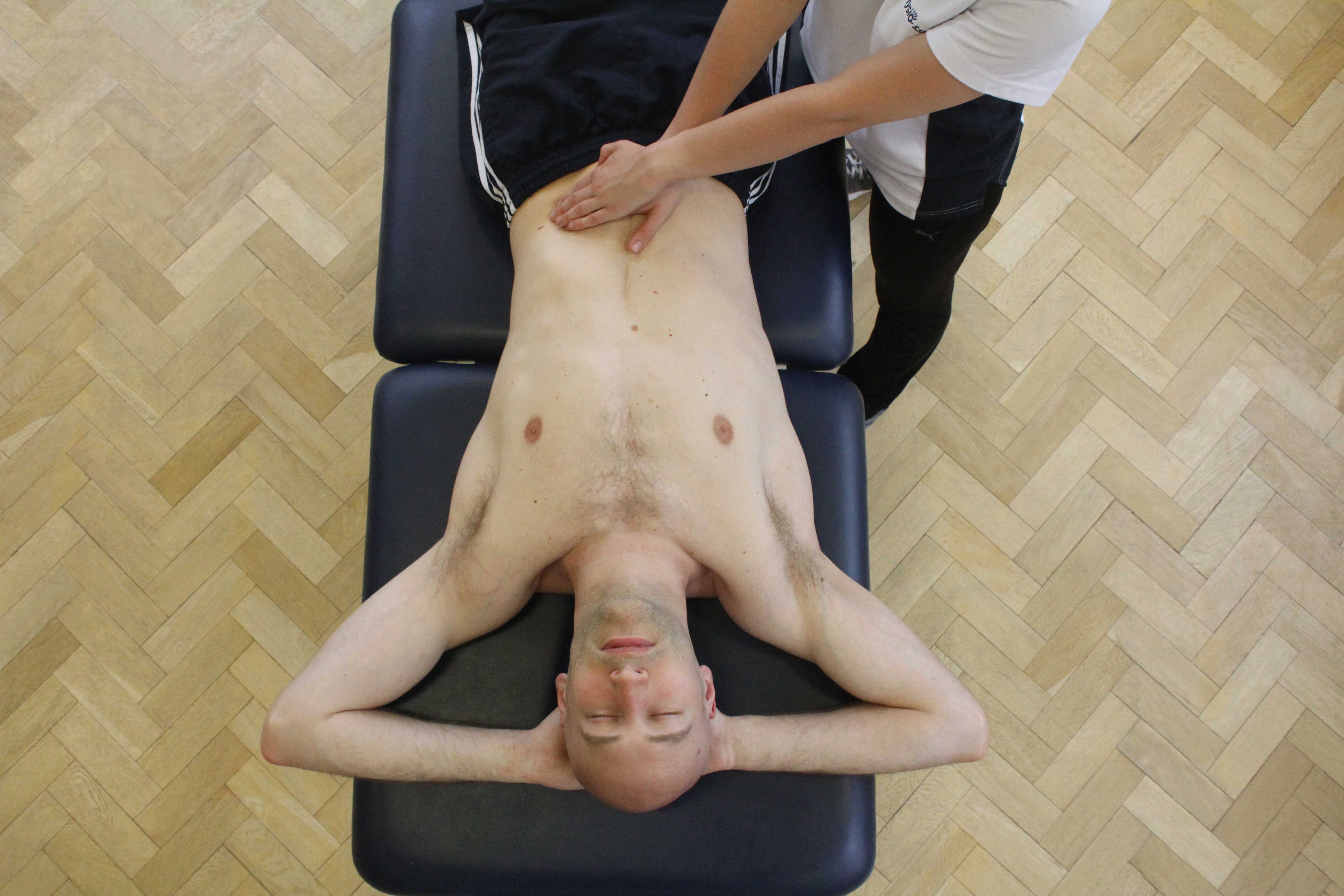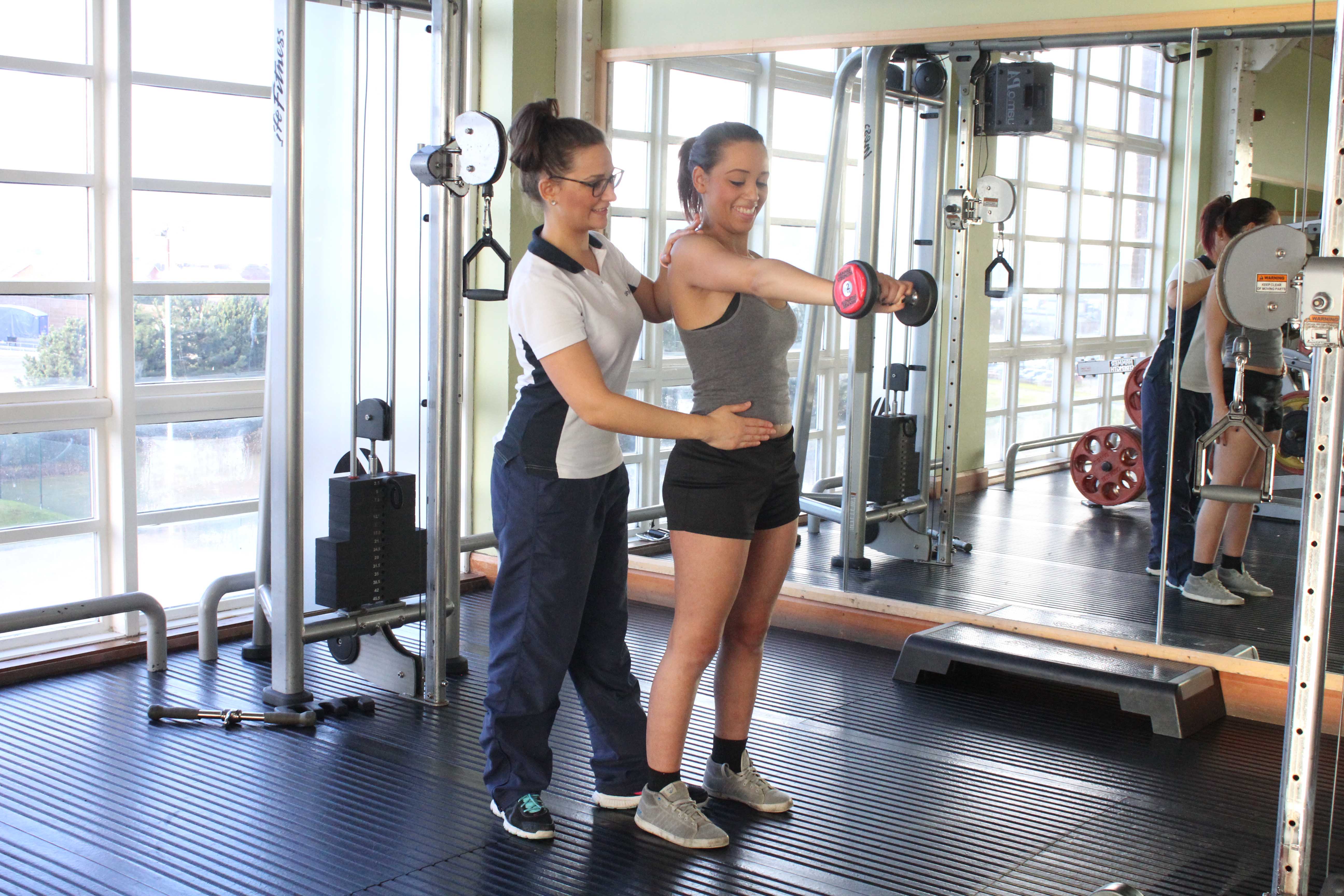 Above: Soft tissue massage of the hamstring muscles by experienced therapist
Above: Soft tissue massage of the hamstring muscles by experienced therapistWhat is a fractured femur?
A fractured femur is an injury affecting the femur bone causing cracks or breaks to appear suddenly usually following a trip or fall or following a high impact accident. There are generally three types of fractures that can affect the femur bone. The type of fracture acquired depends on the mechanism of injury and the age of the patient. The three different types of fractures are:
- Proximal femur fracture - refers to the upper part of the femur bone, just below the hip joint.
- Femoral shaft fracture – refers to the middle part of the femur bone.
- Supracondylar femur fracture– refers to the lower part of the femur bone, just above the knee joint.
What causes afemoral fracture
There are many causes to acquiring a femoral fracture. Most commonly, proximal fractures affect the elderly following a trip or fall due to osteoarthritis weakening the bone meaning it is more susceptible to sustaining a break or crack.
Femoral shaft fractures often come about following a high impact accident such as a road traffic accident of a fall from a significant height.
Supracondylar fractures happen just above the knee joint. They often occur in people having a trip or fall following a total knee replacement or are suffering from osteoarthritis which means the femur is weaker.
 Above: Trigger point massage of the hamstring muscles by experienced MSK therapist
Above: Trigger point massage of the hamstring muscles by experienced MSK therapistHow is a fractured femur diagnosed?
A fractured femur is diagnosed by a health professional carrying out a full subjective and objective assessment. An x-ray will be taken to confirm the diagnosis. Following the findings, an MRI, CT or bone scan may be necessary in order to determine the severity of the injury.
Medical Treatment
Medical treatment may be required depending on the type of fracture. Proximal fractures most commonly are treated surgically. Depending on the damage acquired, a hip replacement may be necessary, especially if the patient suffers from osteoarthritis. If surgery is refused or the risks to carry out the operation are too high then treatment is focused on pain management.
Surgery is normally required for a femoral shaft fracture. Under anaesthetic, the surgeon will insert a metal rod into the centre of the femur connecting the bones back together. Screws are used to hold the rod in place just above and below the fracture site. This is to stabilise the fracture site as much as possible. The rod is not normally removed unless further problems arise. Less commonly, plates and screws or an external fixator may be utilised depending on your injury and the surgeon carrying out the operation.
Supracondylar fractures require surgery if the fracture acquired is unstable and displaced. Under anaesthetic, the surgeon will fixate plates and screws externally or use flexible rods internally depending on the grade of fracture. If surgery is not viable then traction will be used to correct alignment and length followed by bracing to allow healing of the fractured bone.
Following surgery for a fractured femur the surgeon will stipulate when and how you should weight bear and a rehabilitation program should be commenced in order to recover as best and as fast as possible.
 Above: Assessment of the upper leg by an experienced MSK physiotherapist
Above: Assessment of the upper leg by an experienced MSK physiotherapistBenefits of physiotherapy for a fractured femur
Physiotherapy can help people suffering from a fractured femur no matter what the severity of the injury is. The focus of physiotherapy is to:
- Decrease pain levels
- Restore normal strength in muscle groups affected
- Restore normal range of movement in your joints
- Strengthen the injured leg
- Improve mobility
- Return to normal function as soon as possible
 Above: Trigger point massage of the quadriceps muscles by experienced MSK therapist
Above: Trigger point massage of the quadriceps muscles by experienced MSK therapistWhat would physiotherapy treatment for a fractured femur involve?
Physiotherapy treatment for a fractured femur involves different techniques depending on what phase the patient is at. The phases are known as early, middle and late phases and consist of:
- Early phase – the focus initially will be on pain free exercises at first to maintain your flexibility, strength and balance as inactivity can decrease these rapidly. Hands on treatment such as soft tissue massage will be introduced to help decrease pain levels and improve range of movement. Education will be provided on the correct use of walking aids.
- Middle phase – the focus for treatment at this stage is strengthening the muscle groups surrounding the fracture site which are the quadriceps, hamstrings and gluteal muscles. The exercises will be progressed as and when instructed by the physiotherapist to ensure they are carried out safely and efficiently.
- Late phase – the focus at this phase is to gradually return the patient to their function/sporting activity with exercises focusing on sport specific drills.
How do I arrange a physiotherapy assessment for a fractured femur?
To arrange a physiotherapy assessment for a fractured femur with one of our physiotherapists then please email us at office@.............. Or call us on …………. to book an appointment.
Summary
A fractured femur is a very painful injury. It can severely affect your lifestyle. Physiotherapy treatment will ensure you are provided with the most relevant treatment techniques ensuring you can make the best recovery possible.
If you have a fractured femur and think that you would benefit from seeing one of our experienced physiotherapists then email us at office@............ or call us on ………. to book an appointment.

 0330 088 7800
0330 088 7800


































